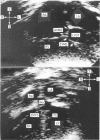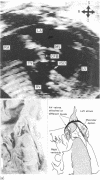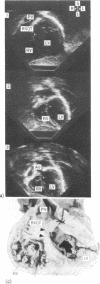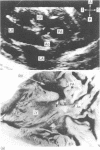Abstract
To evaluate the ability of two dimensional echocardiography to identify and classify ventricular septal defects, 280 infants and children with clinically significant ventricular septal defects were studied. Multiple precordial and subcostal echocardiographic planes were scanned in each patient in an attempt to identify the defects. Defects visualised were classified on the basis of the structures which formed their margins. Subsequent correlation of this information with angiographic (280 patients), surgical (130 patients), and pathological (31 patients) data confirmed that defects in the following sites produced a specific two dimensional echocardiographic pattern. (a) Perimembranous inlet, (b) perimembranous outlet, (c) muscular inlet, (d) single trabecular, (e) muscular outlet, and (f) doubly committed subarterial. A defect was identified and correctly classified in 252 patients. Individual defects were identified with varying degrees of accuracy. All subarterial (24 patients) defects were correctly identified and classified, as were muscular defects of the inlet (18 patients) and outlet (six patients) septa. Of the 185 perimembranous defects, 182 were identified. Only 23 of the 43 single trabecular defects were identified. Small multiple ("Swiss cheese") defects (four patients) were not identified. We conclude that two dimensional echocardiography provides a reliable non-invasive method of identifying and classifying the following ventricular septal defects: (a) perimembranous defects, (b) doubly committed subarterial defects, and (c) muscular defects of the inlet and outlet septa. In our experience it fails consistently to visualise defects in the trabecular septum.
Full text
PDF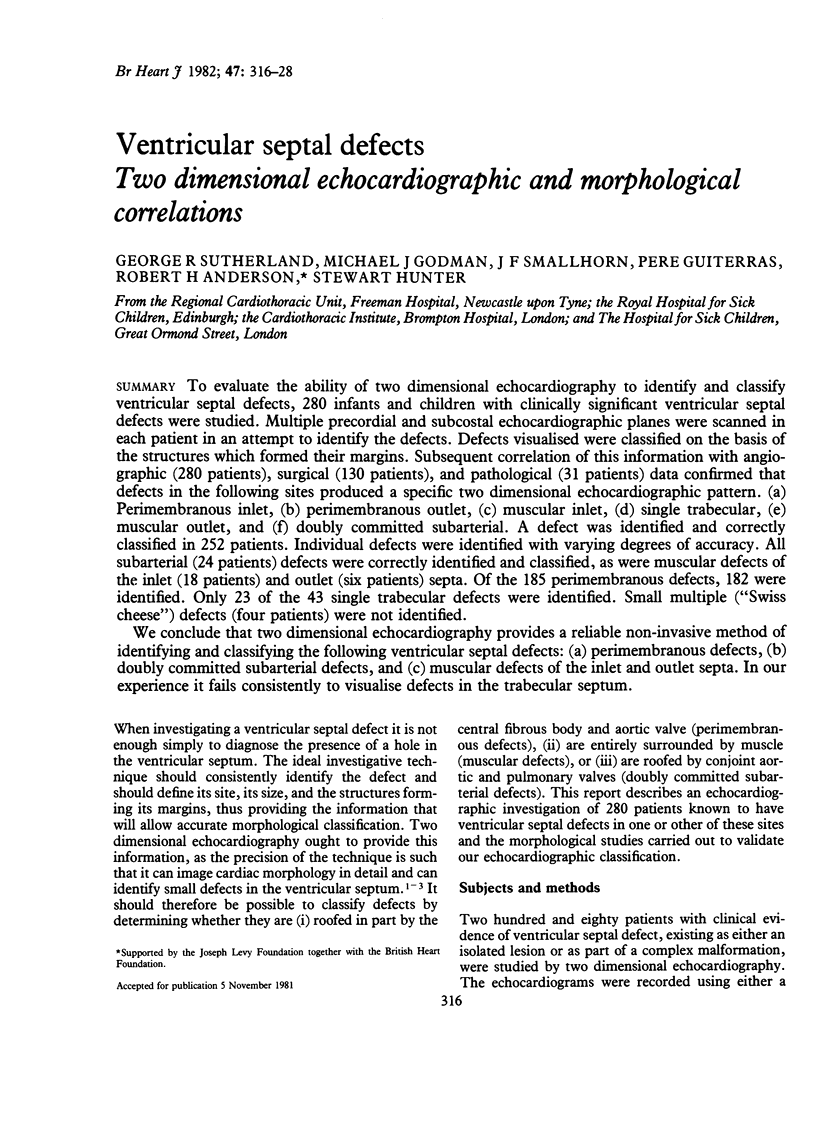
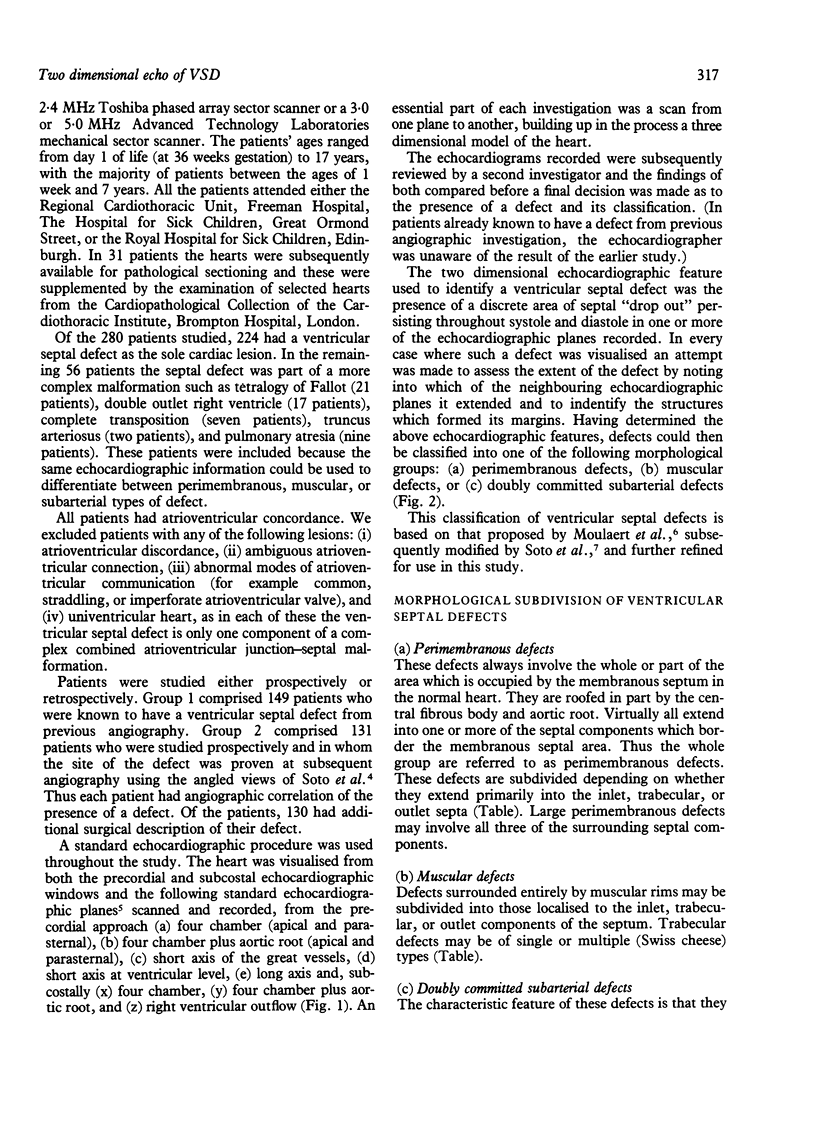
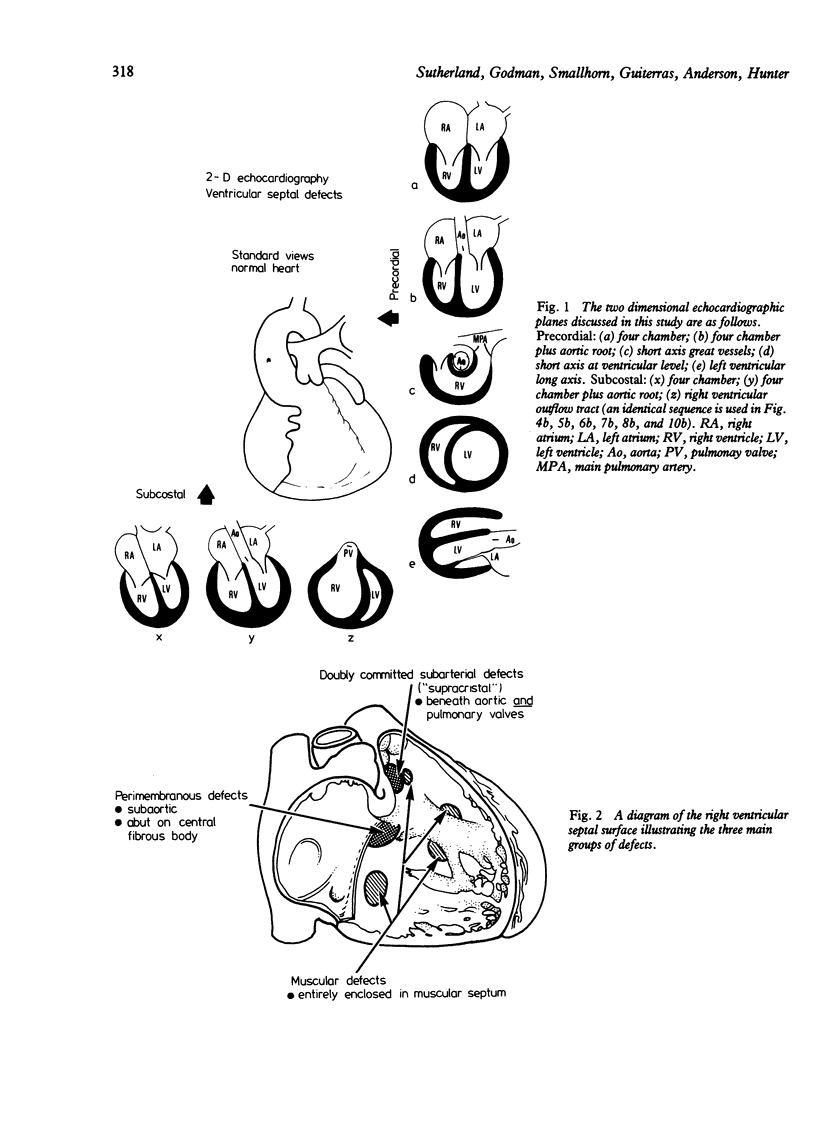
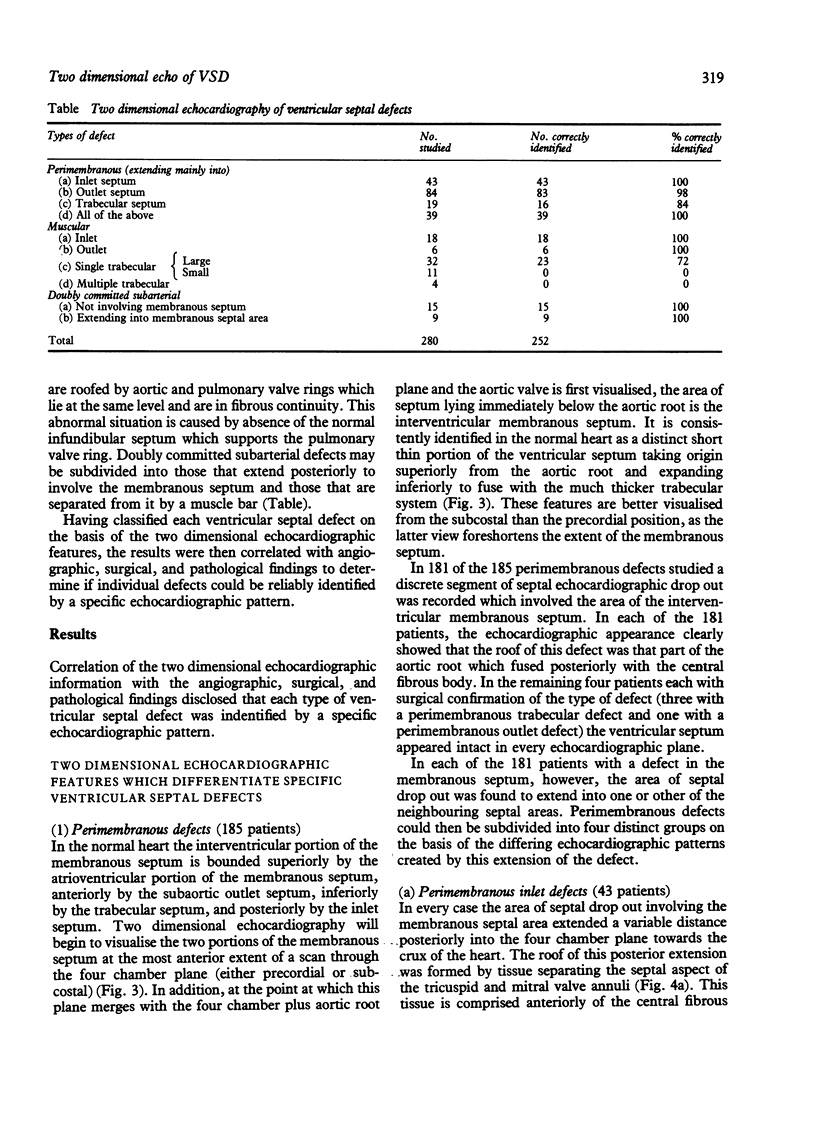
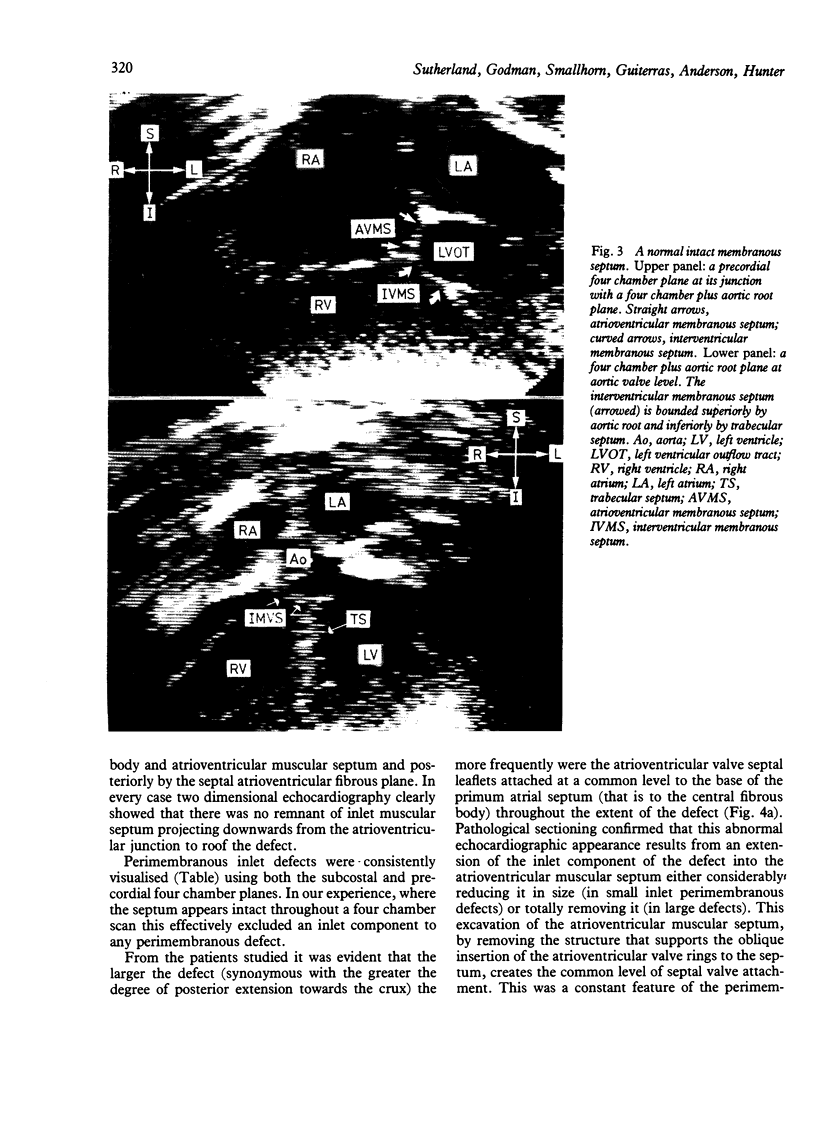
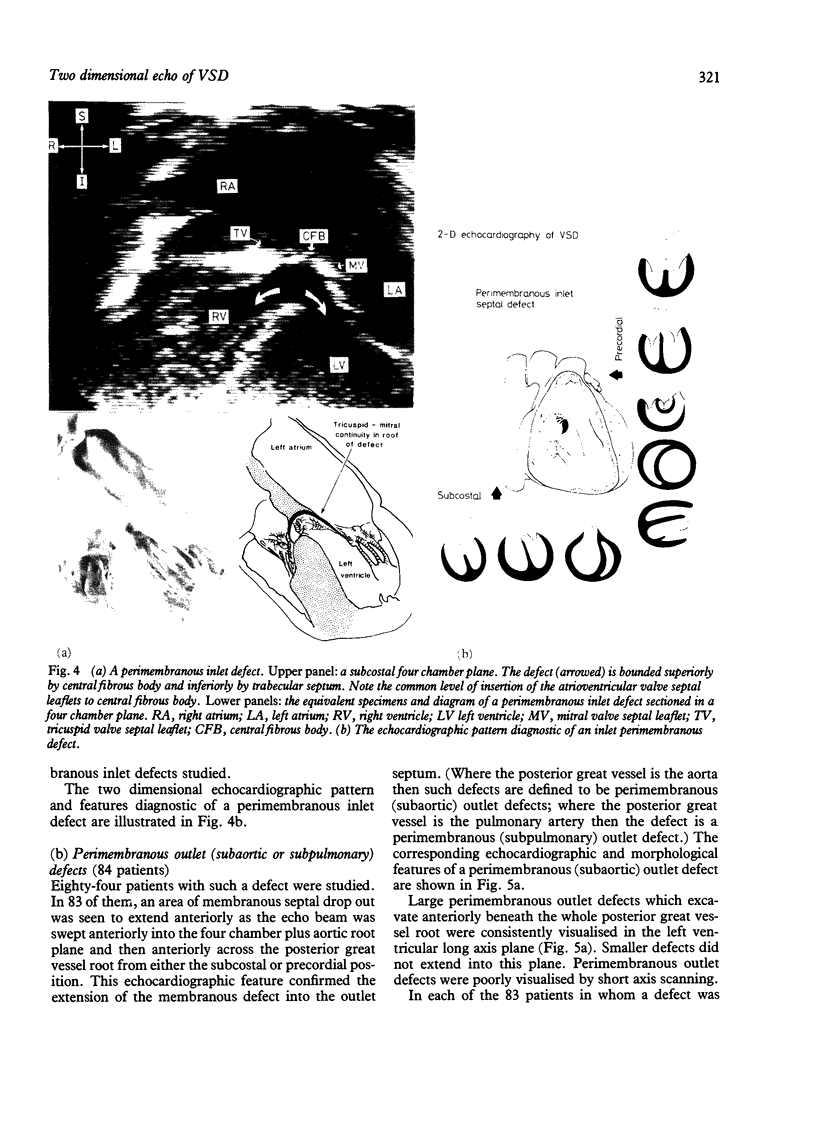
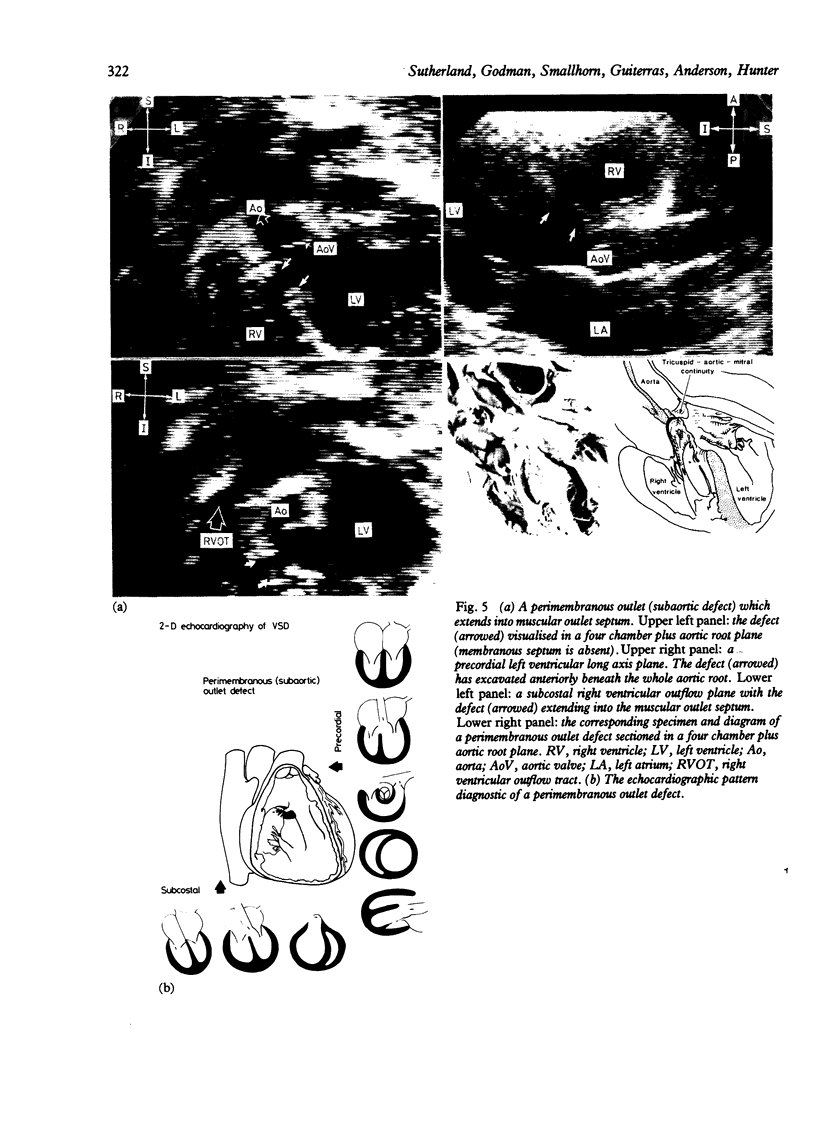
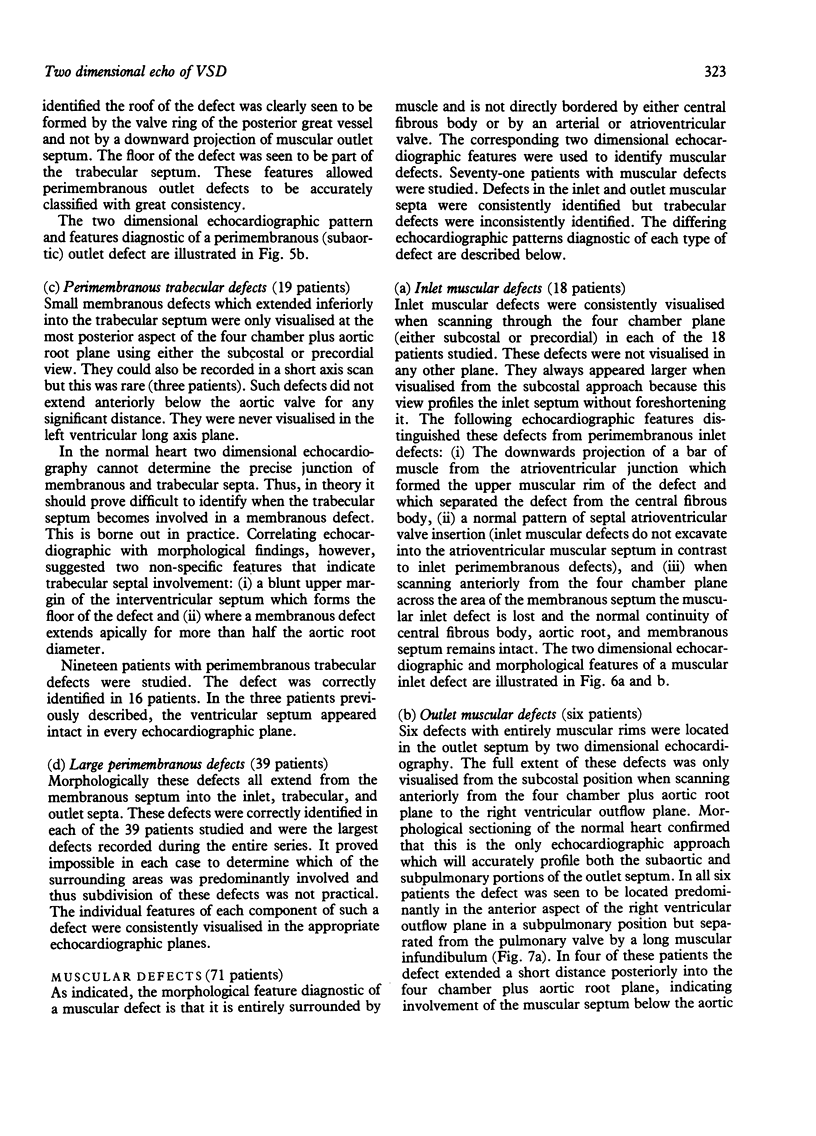
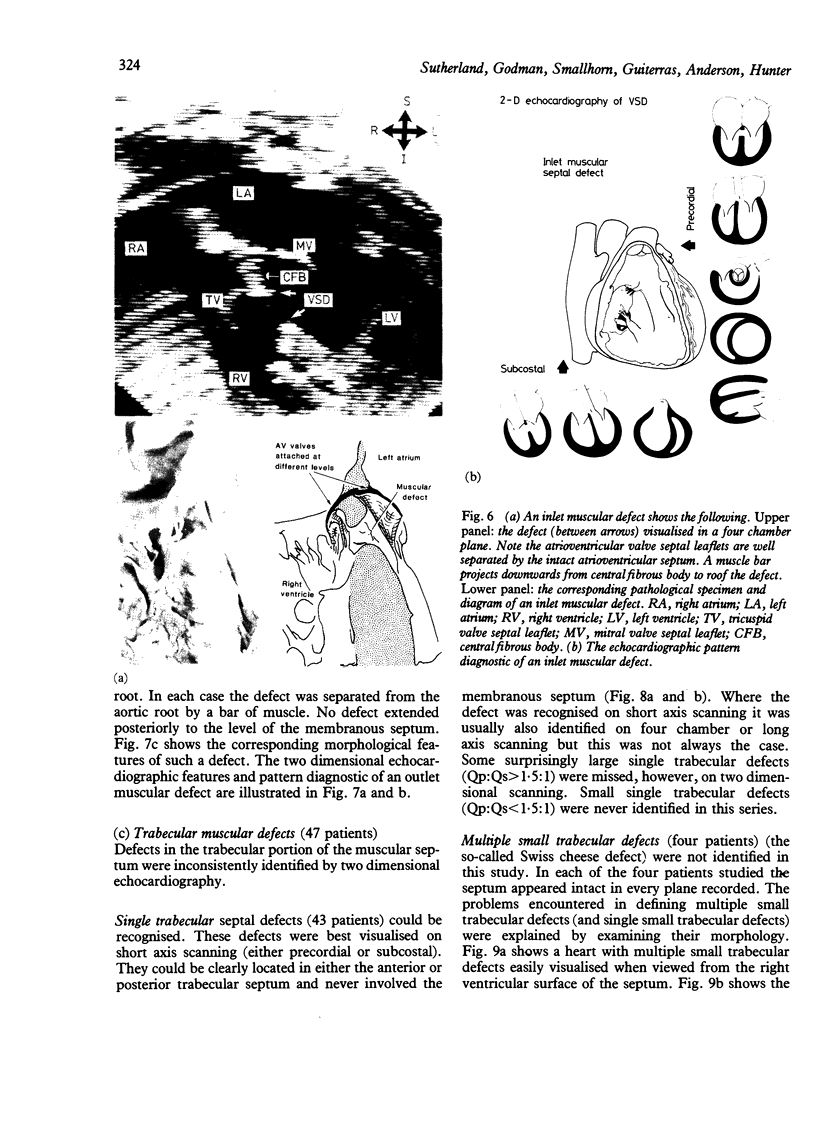
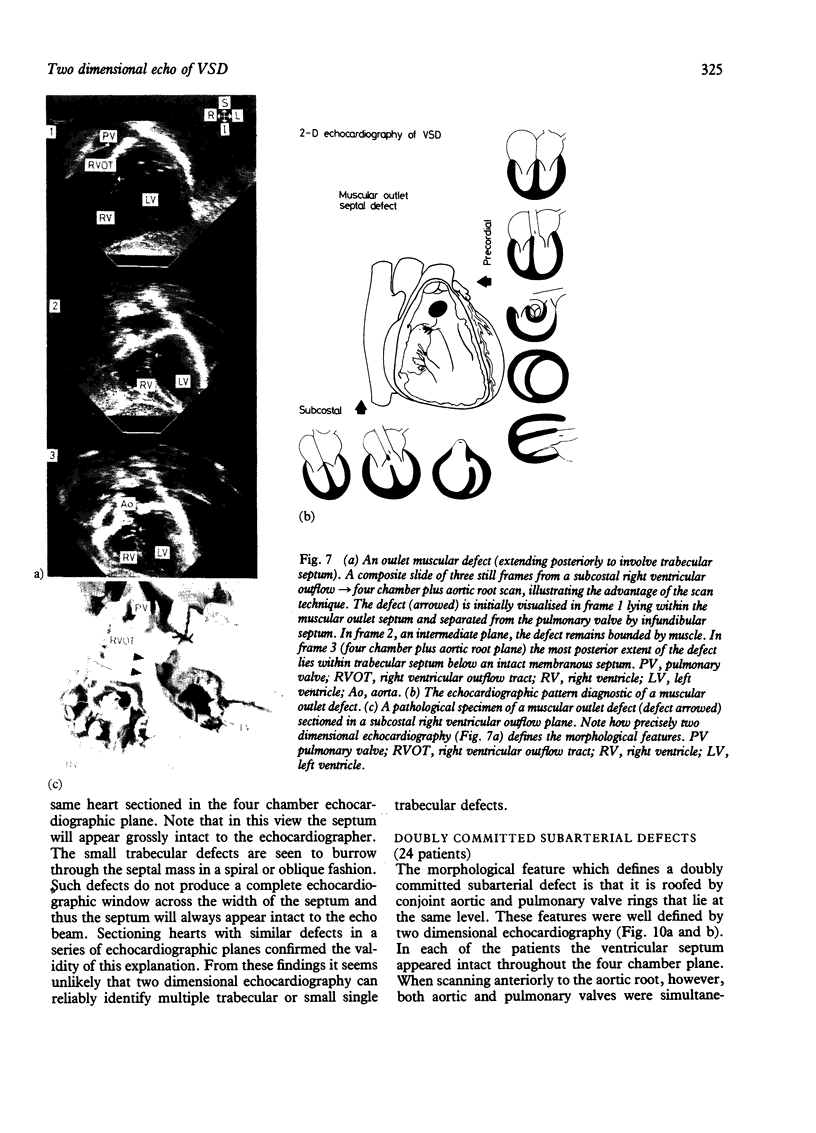
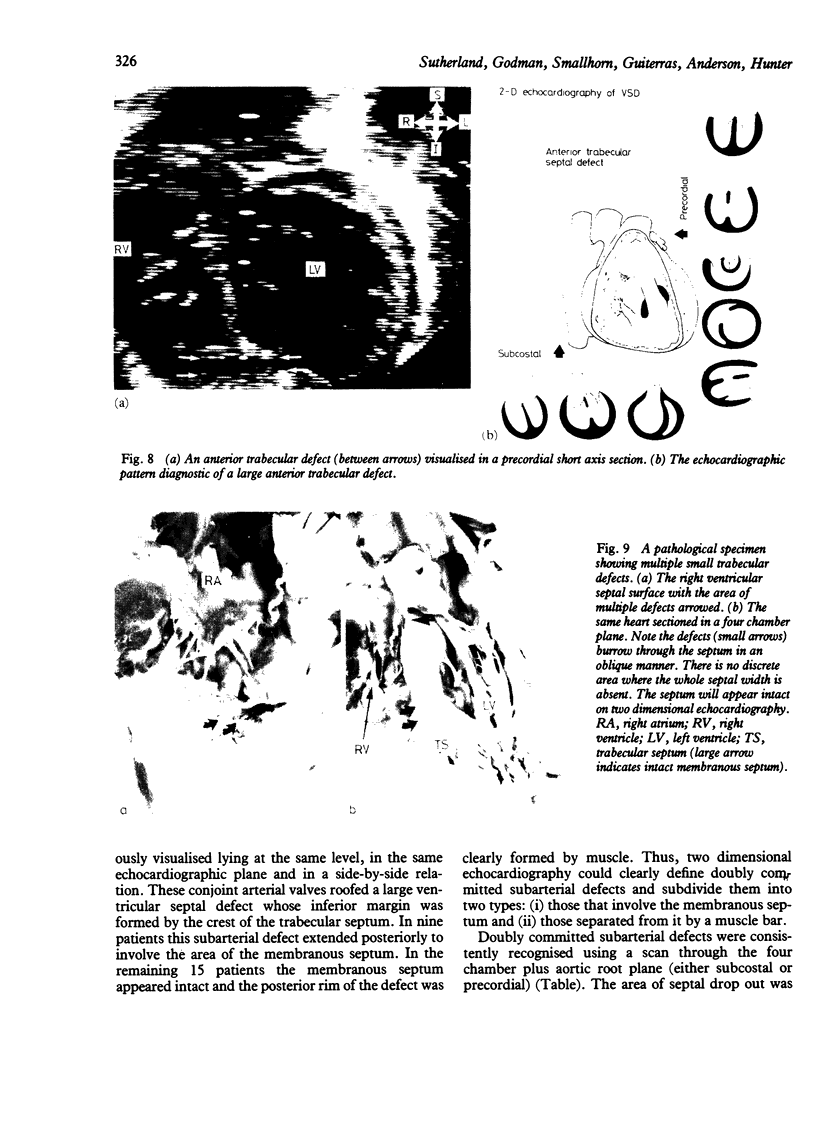

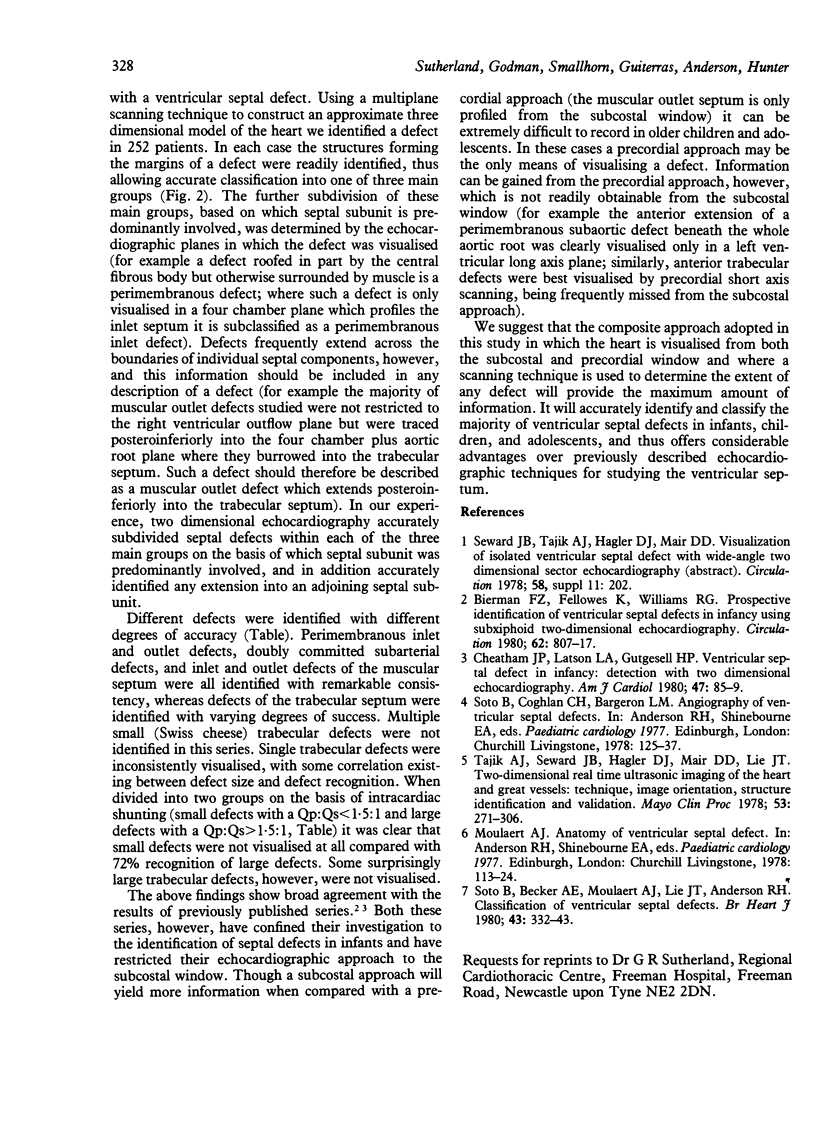
Images in this article
Selected References
These references are in PubMed. This may not be the complete list of references from this article.
- Bierman F. Z., Fellows K., Williams R. G. Prospective identification of ventricular septal defects in infancy using subxiphoid two-dimensional echocardiography. Circulation. 1980 Oct;62(4):807–817. doi: 10.1161/01.cir.62.4.807. [DOI] [PubMed] [Google Scholar]
- Cheatham J. P., Latson L. A., Gutgesell H. P. Ventricular septal defect in infancy: detection with two dimensional echocardiography. Am J Cardiol. 1981 Jan;47(1):85–89. doi: 10.1016/0002-9149(81)90294-0. [DOI] [PubMed] [Google Scholar]
- Soto B., Becker A. E., Moulaert A. J., Lie J. T., Anderson R. H. Classification of ventricular septal defects. Br Heart J. 1980 Mar;43(3):332–343. doi: 10.1136/hrt.43.3.332. [DOI] [PMC free article] [PubMed] [Google Scholar]
- Tajik A. J., Seward J. B., Hagler D. J., Mair D. D., Lie J. T. Two-dimensional real-time ultrasonic imaging of the heart and great vessels. Technique, image orientation, structure identification, and validation. Mayo Clin Proc. 1978 May;53(5):271–303. [PubMed] [Google Scholar]



